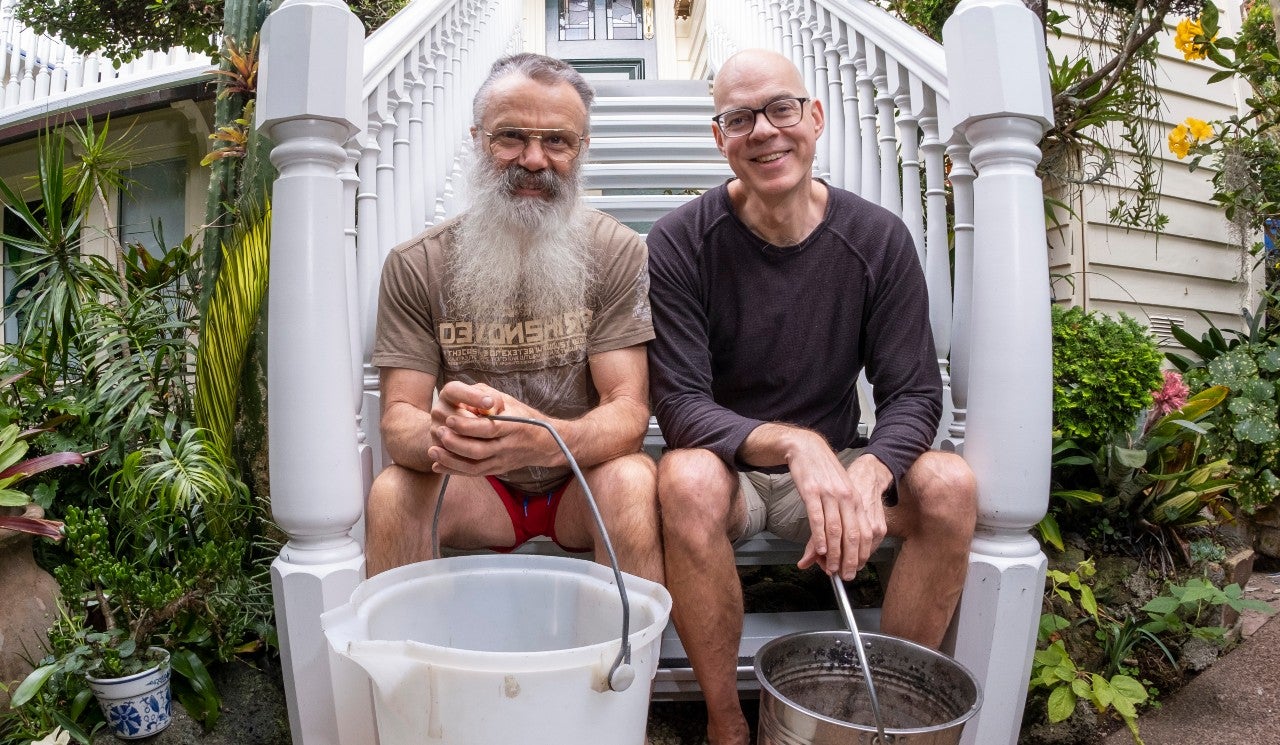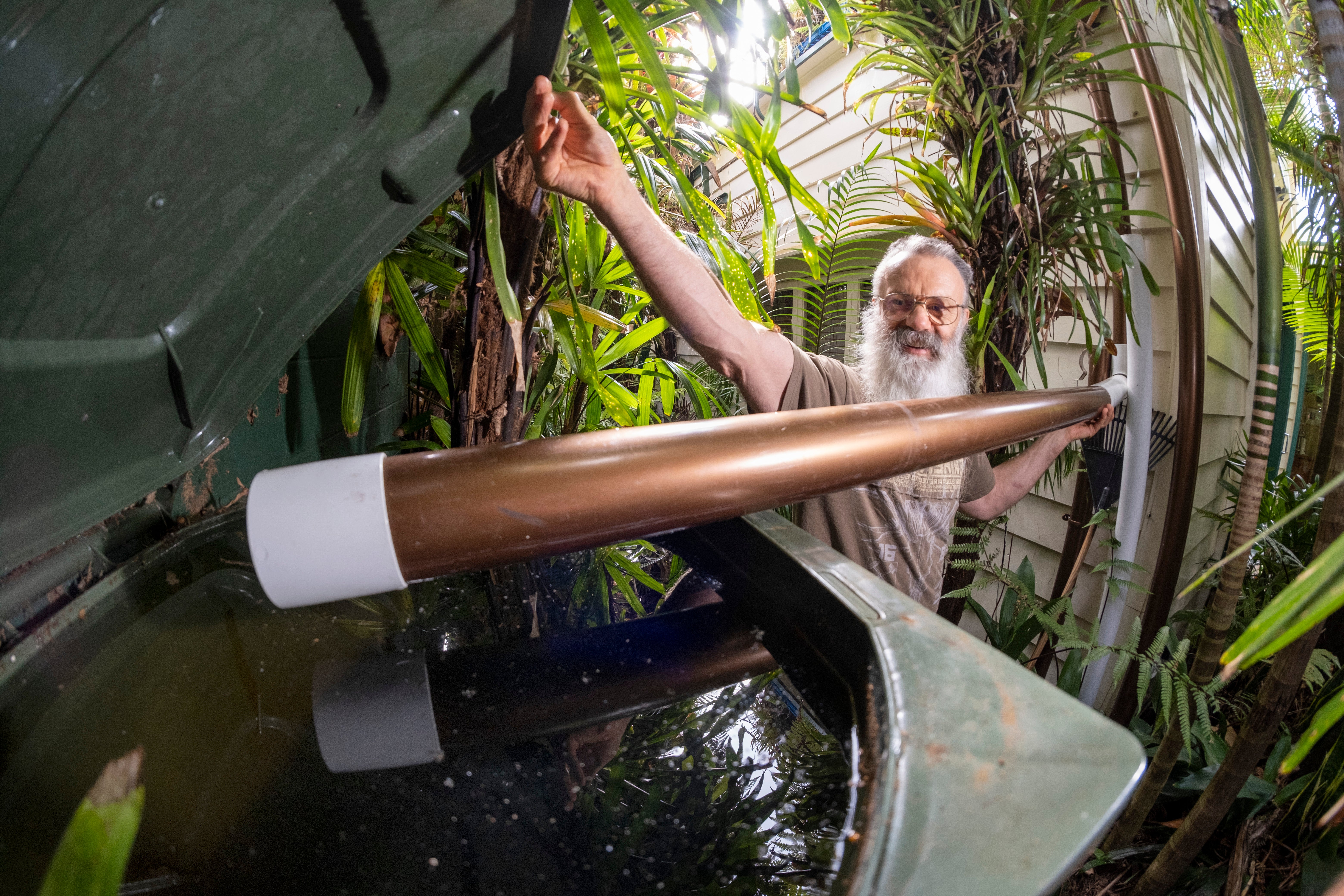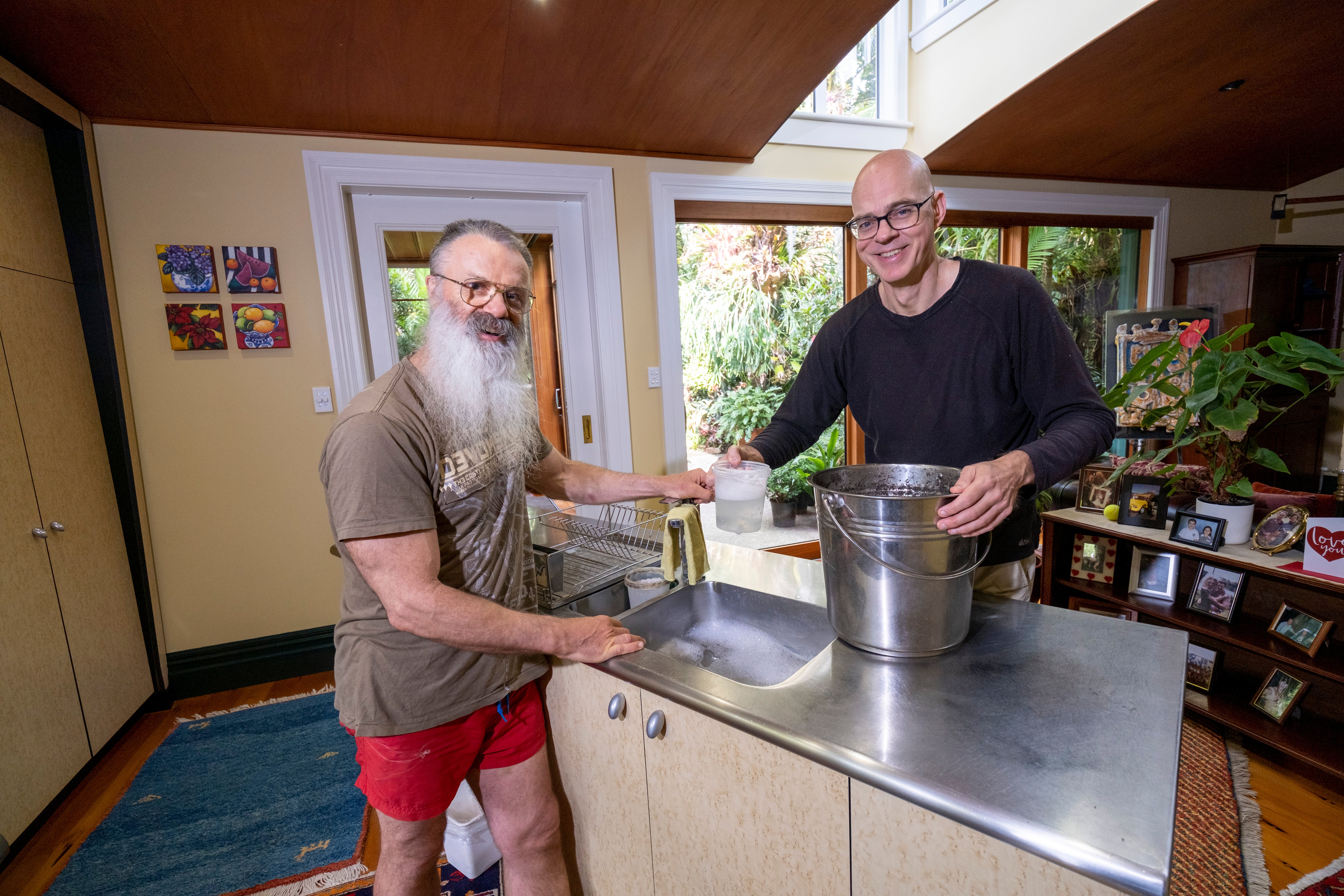
There’s so much to see in the multilayered garden, it’s easy to miss all the barrels and bins set up strategically around the property to catch rainwater and roof run-off.
With the aid of an understanding plumber, Mark and husband Gene Dillman had the downpipes on their house rearranged so they can direct water from the roof into the vessel of their choice. They have different lengths of pipe to reach different barrels.
When the barrels are full, the pipes are realigned to water the garden directly. One pipe has been built to run through the garden to a place where it keeps the water table topped up. “The water we get off the roof is phenomenal,” says Mark.

Mark van Kaathoven redirects water into a wheelie bin.
In a great example of thinking outside the box – or inside the barrel – they use a small, submersible pump which they put into the water barrels and connect to their hose so they can water the garden from different locations without connecting to the mains.
“We’ve seen a huge decrease in our water costs by not watering from the mains. We’re using the amount of water one person would use, rather than two.”

Mark waters the roof garden using stored water.
The roof also has a garden and Mark has created dams in the guttering to direct the water flow where he wants it to go.
They reuse their grey water from the house up to three times – washing the breakfast dishes and lunch dishes in the same water before putting it on the garden. “We got rid of our dishwasher ages ago,” says Mark.
They also collect their shower water and use it to flush the toilet and water the garden.

Mark and Gene recycle their grey water from the kitchen and bathroom.
Mark is from Australia and Gene is from America so they both grew up with an awareness of water conservation.
Gene has childhood memories of visiting his grandfather, who had a private bore for non-drinking water and a separate drinking water system.
“We grew up being mindful of water use.”
Mark says in Australia, people were encouraged to install rain tanks in their driveways to collect water. They carry this ethos of reusing resources into all aspects of the garden – all the clippings are used as mulch to provide food for the plants. “It’s like a time capsule of nutrients. The combination of mulch and clay sends the nutrients straight into the plants,” says Mark.
Gene says a lot of the garden takes care of itself. “We don’t have to mow anything, and pruning is a matter of tidying up. It is its own ecosystem.”
Picking the right kinds of plants that don’t need a lot of water is also key to the garden’s success. Species like bromeliads hold their own water and nikau palms create funnels that trap water.

Strategically-placed barrels and buckets make watering the garden easy.
Fern varieties like staghorn and bird’s nest grow on the side of palms and also trap and hold water. Even plant cuttings are put in bromeliads to sprout because of the trapped water.
Planting upwards rather than outwards makes the most of the 427-square-metre site and means there are several layers of garden, with practically no visible soil. A fireman’s ladder allows Mark to access the higher levels.
His work has spilled into the public domain, where he plants public verges in his street and Hepburn Street and says the shade created by the plants makes the street cooler, like a natural air-conditioning system.
He also works with the Freemans Bay Residents’ Association, supervising the planting of gardens at the nearby Waiatarau/Freemans Bay Park with the help of the community, where he has turned off-cuts from stormwater pipes being laid in the area into planters.